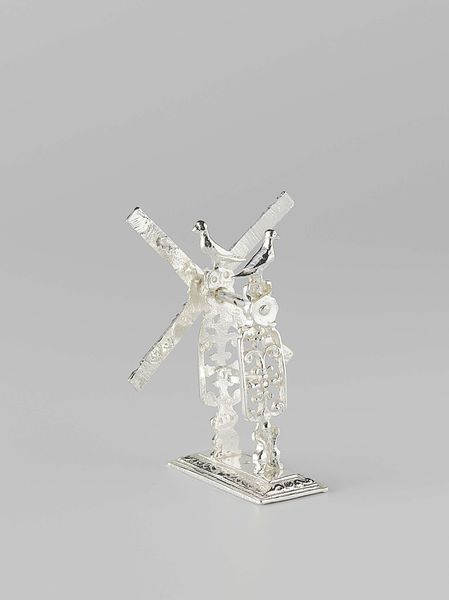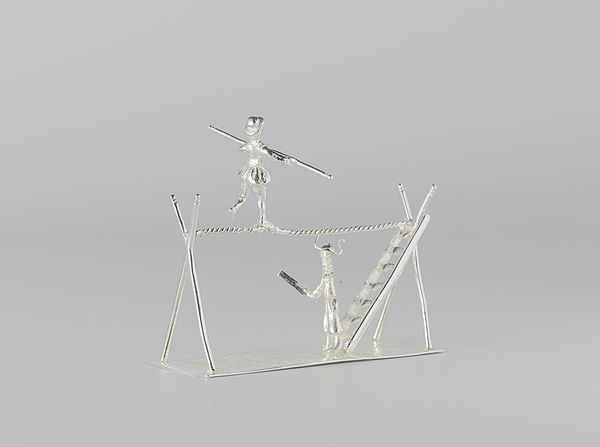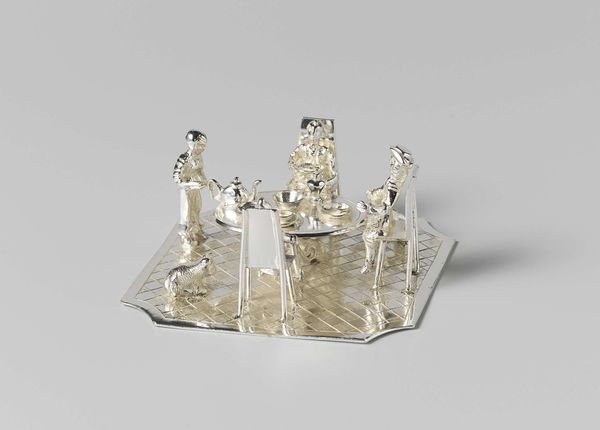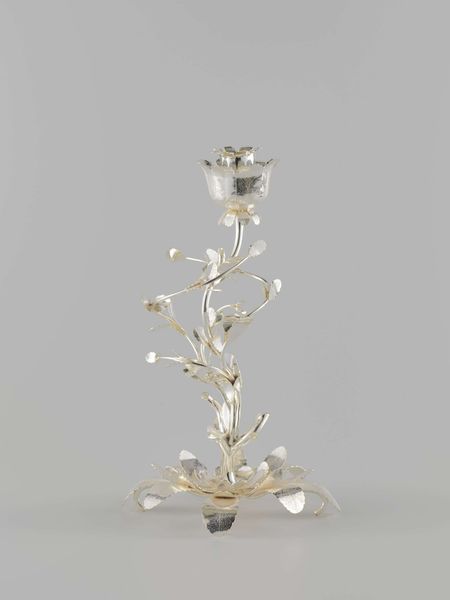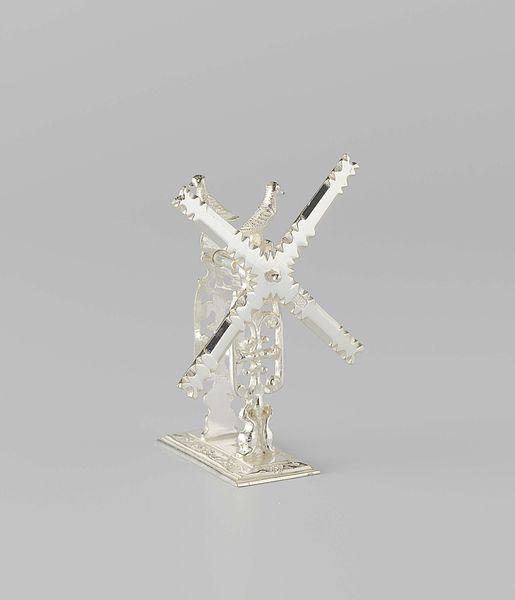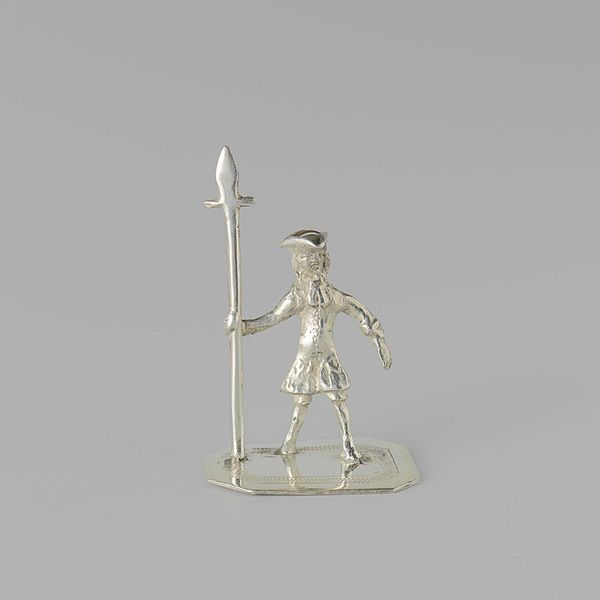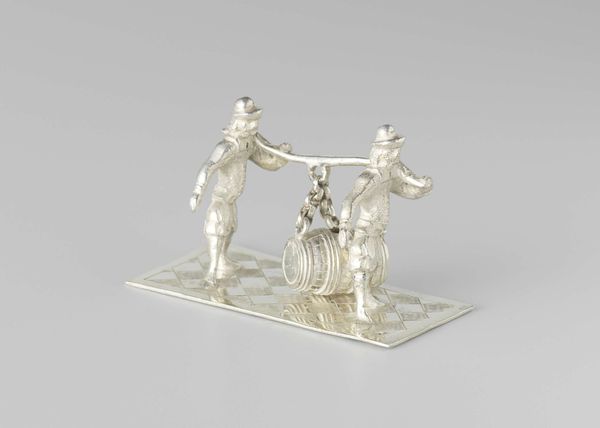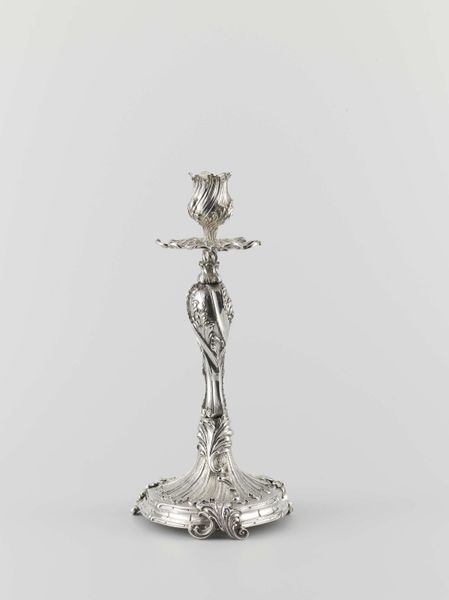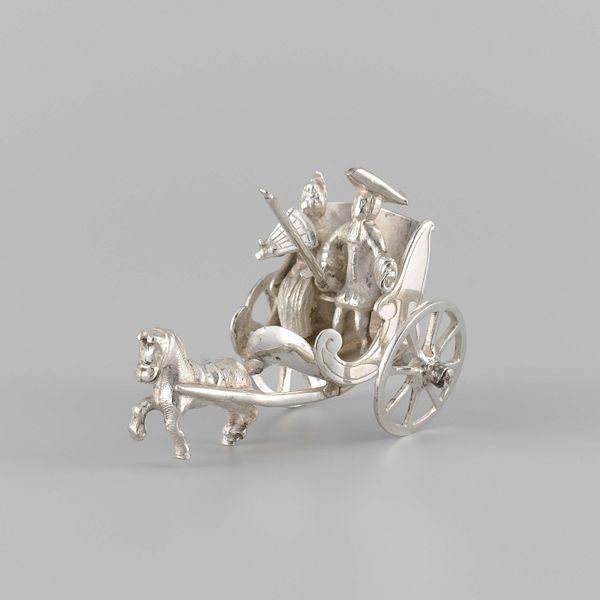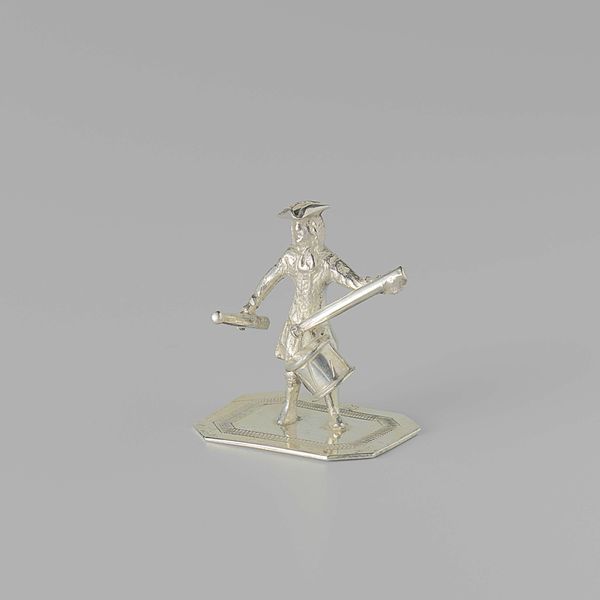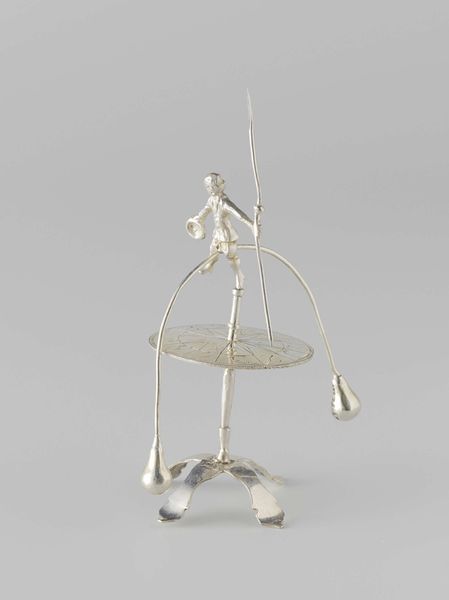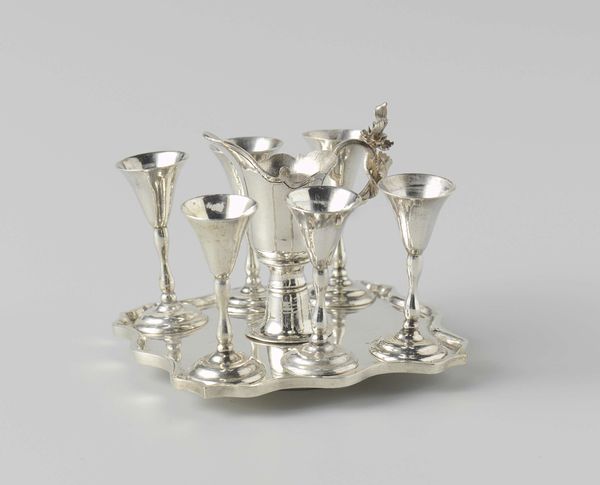
metal, sculpture
#
baroque
#
metal
#
figuration
#
sculpture
#
history-painting
#
miniature
Dimensions: height 9.3 cm, diameter 5 cm
Copyright: Rijks Museum: Open Domain
Editor: This intricate miniature, entitled "Driekoningen" – or "Three Kings" – dates back to 1750, and was crafted in metal by Daniël van Strant. It’s a small sculpture and seems quite elaborate considering its size. What strikes me most is the dramatic use of the star and its height relative to the figures. What's your interpretation? Curator: The Three Kings, or Magi, were a common theme, right? Often connected to power dynamics. But, observe how this depiction uses miniature format. Who were these made for? They were for wealthy patrons, weren’t they? Not for the general public’s devotional practice. They were meant to signify social standing. It's not simply a religious scene; it’s about who can afford to own such craftsmanship. The size of that star you noticed – doesn't it almost dwarf the Kings, emphasizing a kind of divine power that's utterly inaccessible? Editor: That's fascinating! I hadn’t considered the economic implications or the inaccessibility aspect so directly. So, the artwork is speaking to wealth and status? Curator: Absolutely. The miniature form itself communicates exclusivity. Now, think about the historical context. It was crafted in the baroque era; does this reflect in its themes or form, you think? Is there an overt drama about this artwork? Editor: I see what you mean! I was thinking mainly about the biblical scene but didn’t think about who got to see it. Maybe it isn’t dramatic. It's… intimate? Sort of turning the very public message of the Bible to be for the elite? Curator: Exactly. Think of it this way: How does an object like this function as a political symbol for its owner? Editor: It becomes a declaration of their place in society, a physical representation of their connection to power. I never really looked at religious scenes in that context. I thought it would always have been about faith. Curator: Art serves many functions. What have you learned now? Editor: I've realized that the 'Driekoningen' is not just a religious depiction but a display of wealth and influence in 18th-century society, hidden within a small form.
Comments
No comments
Be the first to comment and join the conversation on the ultimate creative platform.
